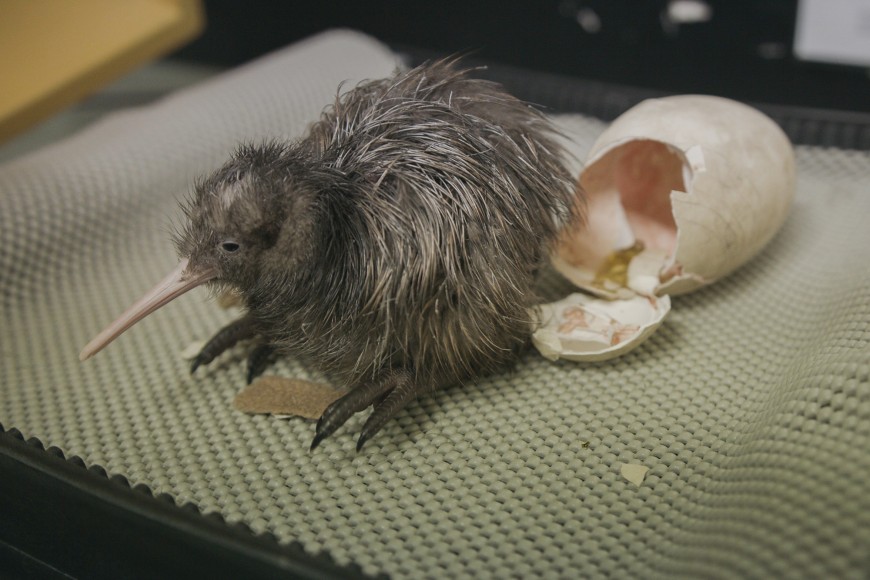With only 700 Ōkārito kiwi (rowi) left in the wild, the birds are in serious trouble, with their population steadily declining 2 to 5% a year. For the past two decades Operation Nest Egg (ONE) has ensured 95% of eggs in the hatchery resulted in a live chick, but despite their healthy start in the hatcheries some kiwi fail to prosper once they’ve been released into the wild.

A kiwi chick emerges from its egg at Willowbank Wildlife Reserve. Image: Peter Young
Manaaki Whenua Senior Researcher Dr Manpreet Dhami and postgraduate students Priscilla San Juan and Stephen Rowe hypothesised that if exposure to microbial diversity correlates to the development of a well-functioning immune system in humans, there was no reason it shouldn’t be the same in kiwi. It was time for a closer look at the kiwi gut microbiome.
Priscilla’s earlier gut microbiome research showed that faecal samples from Brown kiwi raised at the National Kiwi Hatchery Aotearoa in Rotorua had lower microbial diversity and a different composition from wild samples. “The hatchery residents had drastically different microbes in their guts,” says Manpreet.
The gut microbiome is a highly diverse community of microorganisms that coexist within the gastrointestinal tract and are responsible for many important biological processes on behalf of their host. A healthy microbiome is essential for digestion, nutrient uptake, pathogen resistance and immune regulation, to name just a few functions.
The challenge was how to introduce diverse communities of microorganisms through a natural diet in a sterile environment. The researchers suggested the answer to the problem was to let them eat dirt! Dirt that had a little something extra added.
Soil samples taken from the Ōkārito Lagoon on the West Coast were used as a food additive for a treatment cohort of rowi chicks at Willowbank Wildlife Reserve in Christchurch. “The idea was to look at what happens when you introduce soil from the kiwi’s original rohe, where the eggs come from, into their diet,” says Stephen. “We have been feeding the soil to half the kiwis in the cohort to see if the soil microbes can be assembled sooner in the gut of the birds. In effect, giving the birds a probiotic.”
Faecal and soil samples were then collected for community metabarcoding to determine how the microbial community changes in the kiwi over time, and if there were any correlations between these changes and the health outcomes of the rowi.
Initially adding unsterile soil seems like an easy fix and good news for the birds, but it comes with a caveat. Hatcheries can’t just use any soil in a chick enclosure. Soils also harbour deadly pathogens that can cause severe and even fatal illnesses in kiwi chicks, such as aspergillosis, coccidiosis, and candidiasis. Aspergillosis is of particular concern because it is a common mould that grows on sphagnum moss, which is often used as compost, and it’s a kiwi killer.
Stephen’s research demonstrated a simple yet effective PCR-based method for qualitative testing to screen for soil-based contaminants. It will be a cost-effective routine screen for wildlife sanctuaries, which will help meet their aims to bump up the numbers of kiwi and release an ambitious total of 10,000 kiwi into the wild by 2050.
“The end goal for both these projects is to find a way to put good microbes back into the kiwi to give them the best possible start to life,” says Manpreet.
Key contact

